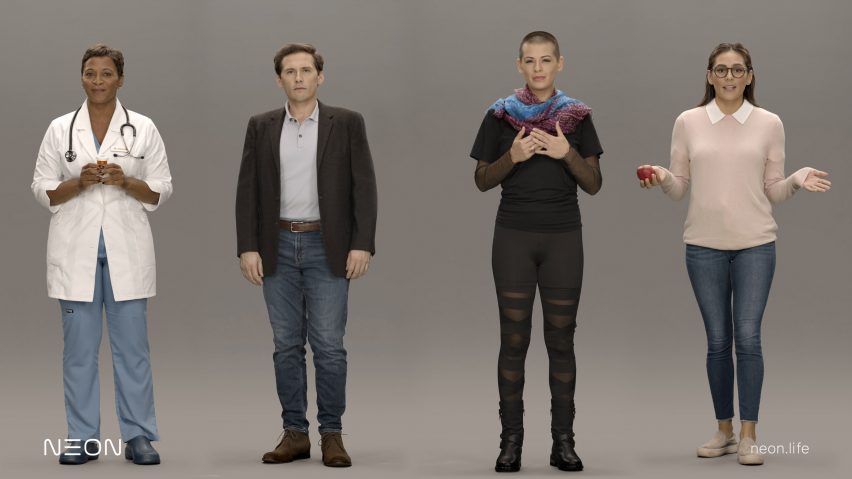In a bid to "make science fiction a reality", Samsung's future factory STAR Labs has developed Neon, AI-powered virtual beings that look and behave like real humans.
Unlike artificially intelligent (AI) assistants like Siri or Alexa, STAR Labs' computationally created beings aren't programmed to be "know-it-all bots" or an interface to answer users' questions and demands.
Instead, the avatars are designed to converse and sympathise "like real people" in order to act as hyper lifelike companions.
"We have always dreamed of such virtual beings in science fictions and movies," said STAR Labs CEO Pranav Mistry.
"Neons will integrate with our world and serve as new links to a better future, a world where 'humans are humans' and 'machines are humane'," he continued.
The AI-powered lifeforms, called Neons, were debuted at this year's Consumer Electronics Show (CES) and included simulations of a yoga instructor, a banker, a K-pop star, a news anchor and a fashion model.
While the Neons may appear to be modelled after real humans, each one has its own unique personality, according to the company.
This includes being able to move, express themselves and speak. They can also remember and learn things about their user, and speak in any language.
The Neons are still currently in their early development phase, acting mainly as AI chatbots in human-like form.
At the electronics event, visitors could see live demonstrations of life-size Neons on large displays as they reacted and responded to their audience in real-time.
In the near future, STAR Labs envisions people being able to license or subscribe to a Neon, with different virtual humans being able to offer different services such as a customer service advisor, a financial advisor, healthcare provider or concierge.
With further developments they could work as television presenters, spokespeople or actors. Alternatively, the avatars could simply act as companions or friends.
"Neon is like a new kind of life," said Mistry. "There are millions of species on our planet and we hope to add one more."
"Neons will be our friends, collaborators, and companions, continually learning, evolving, and forming memories from their interactions," he added.
The technology platform powering the Neons is called Core R3, which stands for "reality," "realtime" and "responsive", and employs behavioural neural networks, evolutionary generative intelligence and computational reality.
Inspired by the "rhythmic complexities of nature", the platform allows Neons to react in less than a few milliseconds when a question is asked in real-time.
An additional platform still in development, called Spectra, will complement Core R3 with more artificial intelligence, machine learning, emotions and memory.
Tesla founder Elon Musk also tried to bridge the gap between humans and technology with his tech startup Neuralink, which plans to build implants that connect human brains with computer interfaces via AI.
The end goal of this technology is to be able to connect the brain to an external device to form a brain-machine interface, eventually lead to a future of "superhuman intelligence".

